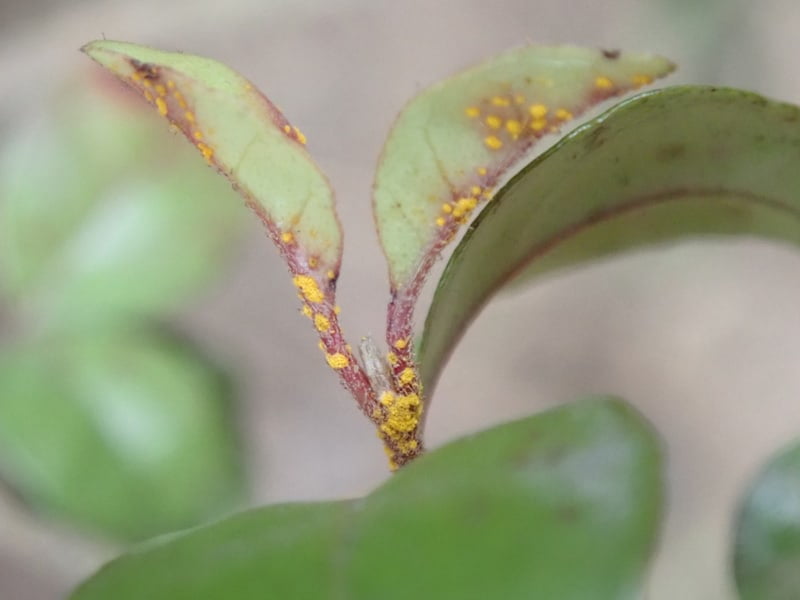The monitoring focused on two endemic species: ramarama (Lophomyrtus bullata) and rōhutu (L. obcordata) and their natural hybrids, because Lophomyrtus was identified as highly susceptible to the pathogen. Other species included in the monitoring were: mānuka (Leptospermum scoparium), pōhutukawa (Metrosideros excelsa) and anyother Myrtaceae species growing within a three-metre radius.
The reproductive ability of infected and non-infected Lophomyrtus was also recorded, monitoring the development of all reproductive structures.
Monitoring showed myrtle rust is severely impacting Lophomyrtus species in the native forest at all stages – from seedlings through to mature trees. All reproductive structures, flower buds, flowers, developing and mature fruit are susceptible, with highly infected fruit being aborted before maturity.
Myrtle rust was associated with the death of 75% of seedlings over two infection periods (seasons) (October 2018-June 2020).
Monitoring also shows that the pathogen continues to spread within sites and to new areas in the same region. As inoculum levels increased over the season, other Myrtaceae species (Metrosideros fulgens, M. diffusa and M. perforata) became infected.
The continued long-term monitoring in the Rotorua district is essential to understand the patterns of disease expression and impact of myrtle rust on the health and survival of Myrtaceae species.
This work was led by Plant & Food Research and Scion, and funded by the initial Ngā Rākau Taketake surge investment. It built on previous monitoring funded by MPI.
